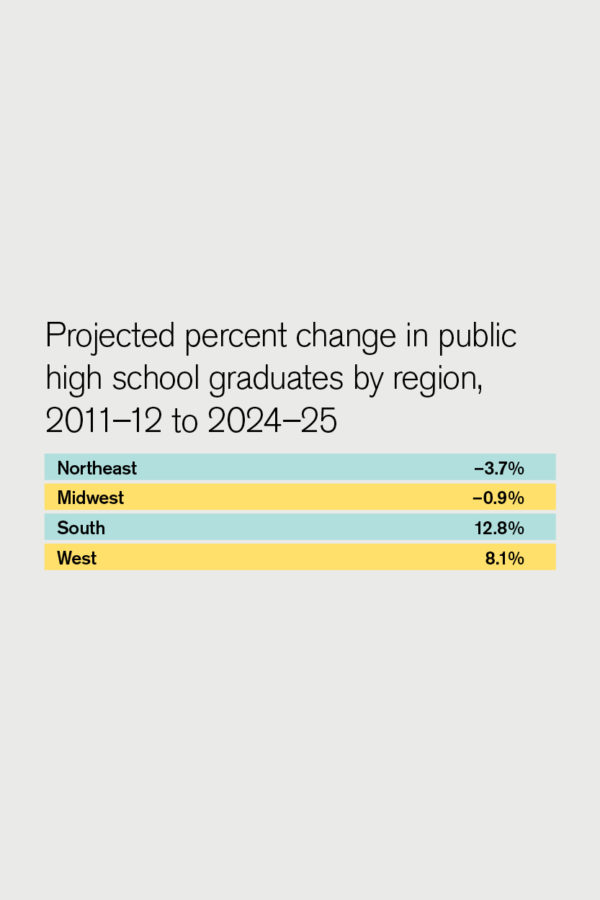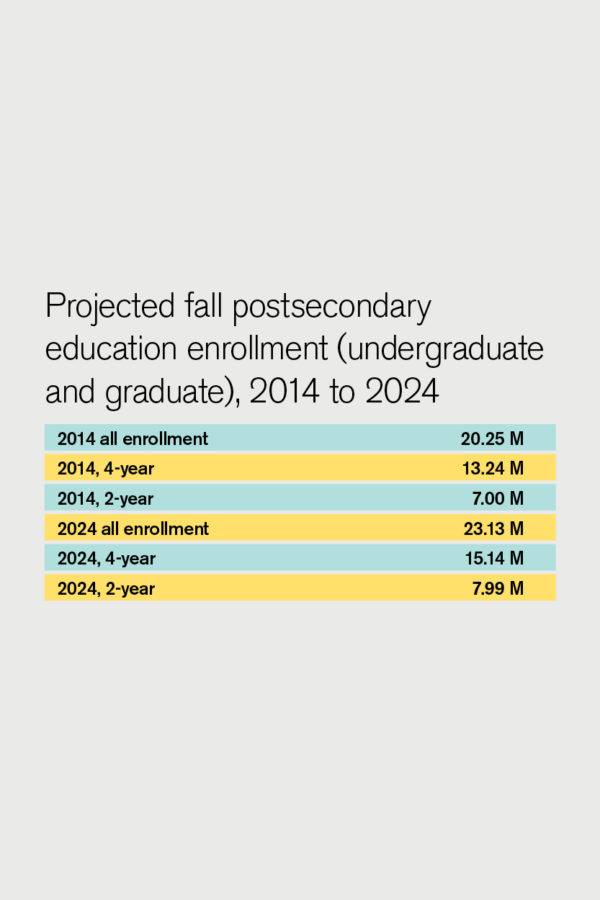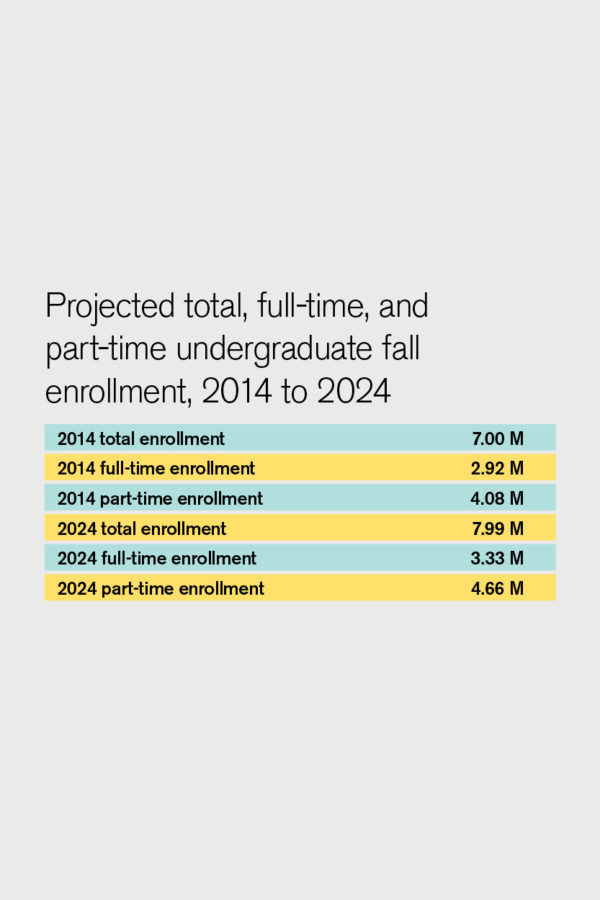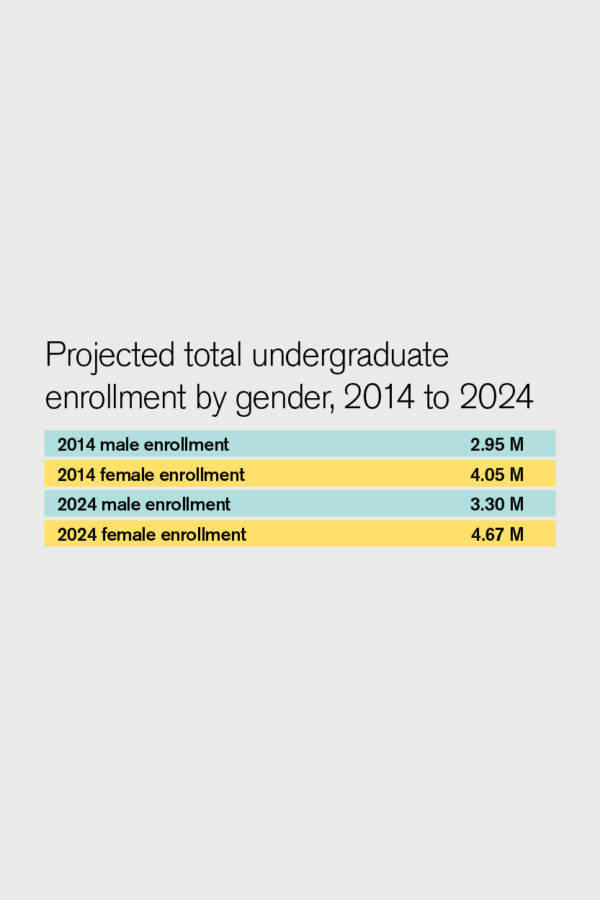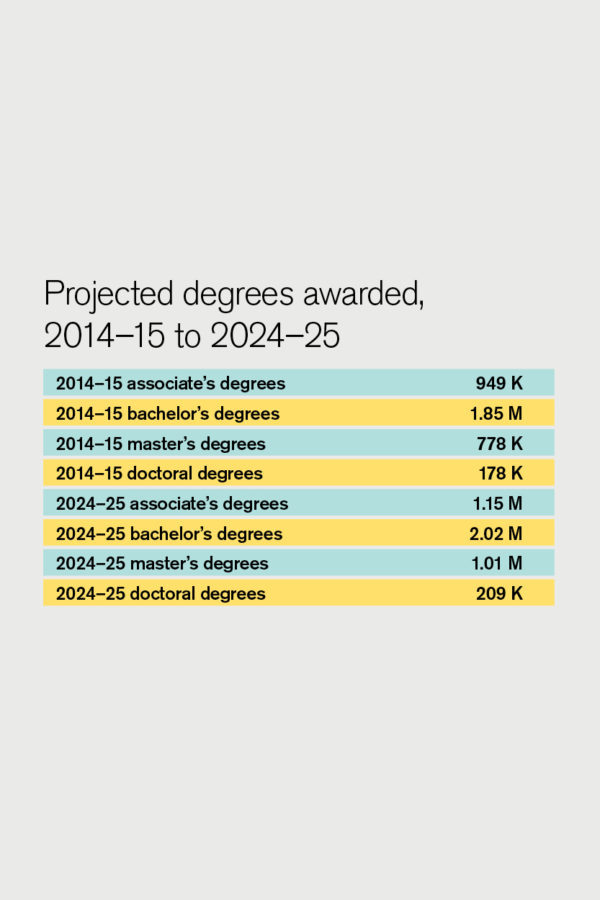Get Students on the Brand Wagon
Mercy College’s new branding initiative highlights its greatest asset, students.
Who better to communicate an institution’s values and mission than its students? This was precisely the thinking behind Mercy College’s new branding initiative, which was unveiled last April.
Based in the New York City area, Mercy offers more than 90 undergraduate and graduate degree and certificate programs. The college’s total enrollment, inclusive of full-time and part-time undergraduates and graduates, is close to 11,000. What sets Mercy students apart? As indicated on the college’s website, they “are on a personal mission: to get the most out of life by getting the most out of their education.”
Mercy had a great story to tell about its students, but its branding didn’t fully reflect that. “We knew that we had a unique position with our students, and we wanted to find a way to capture that in our branding,” says Mercy’s Chief Advancement Officer Bernadette Wade, who led the rebranding effort.
“We wanted to create an authentic look that communicated who we are internally and externally,” she says. “It was important to capture the real spirit of our students, not only in words, but graphically as well.”
Video and Vocabulary
One of the key elements of the campaign that accomplished the goal of successfully combining words and images is a YouTube video, which has received more than 2,200 views since it was posted six months ago.
The video features Mercy students of all ages and cultural backgrounds, and emphasizes the key characteristics that they have in common and that embody the college’s mission and vision. The video voice-over begins, “Calling all strivers. We’re looking for the driven, the gutsy, the gritty, the unstoppable, the possessed, the obsessed—we are Mercy College.”
The video was one of several components designed to ensure “strong consistent messaging so that we’re all telling the same story,” Wade says. And the development of this message was very much a team effort. “The way we approached this initiative was as an integrated effort,” she explains. “My office teamed up with academic and student affairs, as well as donor relations and admissions; faculty and staff were involved as well. We worked together to tell the right story.”
As heard in the video, that story presents Mercy as “the place to take your dreams and your determination, and make of yourself and your world a better place.”
Paraphernalia With a Purpose
In addition to creating the video, it was important to develop ways for the new branding to be seen, heard, and worn on campus.
“Outdoor signage has gone up on all campuses,” Wade says. “External graphics are very important.” Along those lines, tall, vertical, pop-up banners with giant words on them were also created. “When we do events now on campus, we bring them with us,” Wade notes. “Those have been very important in showing off the brand.”
Just as important, all speeches given on and off campus communicate the new messaging. Wade wanted to “make sure everyone was using a similar script in terms of how we talk about Mercy.”
As for students, they are wearing their scripts, so to speak. The T-shirts displaying the brand colors and words have been very popular with them, and students have requested other apparel as well. Essentially, they are walking representations of the brand they inspired.
A Timely Tag Line
Students and their stories of overcoming various obstacles to pursue higher education also inspired the new tag line developed as part of the branding initiative: “Mercy College, for those with a passion to get ahead.”
“Selection of the tag line was important,” Wade emphasizes. “It now appears as part of our logo. We haven’t had one in some years, but it really helped us to express our authentic message in just a few words. It had a good rhythm, and fit who we were.”
And how good of a fit is the new brand? Time will tell. In February, Mercy will complete a quantitative analysis to gauge the acceptance, awareness, and understanding of its new brand. In the meantime, it has been soliciting qualitative feedback during rollout.
Wade received some of this anecdotal feedback firsthand. “When students move back into the dorms at the beginning of the semester, undergraduate students have mentors assigned to work with them,” she says. “I saw a group of mentors in the parking lot wearing T-shirts displaying the brand colors and words. One of them remarked, ‘The more I understood [the brand], I realized that it reflected us. It makes me feel a part of something bigger.’”
Put Your Best Brand Forward
Wade offers these suggestions for implementing a successful rebranding initiative at your institution.
- Get input at every step along the way. “As we worked with an outside consulting firm of brand experts to develop our guiding principles, a small crossfunctional team of eight provided input throughout the process of developing the brand identity,” she says.
- Plan ahead for implementation. “It’s hard to do as you’re getting closure on brand expression,” Wade notes. “Your implementation plan starts evolving as you’re finalizing your brand.”
- Be bold and don’t be afraid to try something different. “For us, the wording, visual expression, and tag line were different,” Wade says. “But we had the fortitude to stick with it, and we’re very pleased so far with the understanding and acceptance of the brand.”
SUBMITTED BY Apryl Motley, Columbia, Md., who covers higher education business issues for Business Officer.
If a student strolling through the campus at the University of California, Irvine, notices a streetlight is on the blink, he or she can report it on the spot using a cellphone, thanks to inField.
A modular, Web-based application, inField includes a community-action feature that allows students, staff, visitors, and employees to report items that are broken, missing, or need attention, explains UCI’s Dina Ochoa, interim associate director, transportation and distribution services. The Web application received the 2016 NACUBO Innovation Award honors for outstanding institutional innovation and achievement in process improvement and resource enhancement.
“From your phone, you can go to our home page and click on ‘report an issue,’ where you will see 13 different items you can report, including abandoned bicycles; ADA concerns; graffiti; parking infrastructure; pedestrian access; pothole concerns; and traffic signals, streetlights, or signs,” she says.
Streamlining Processes
The idea for the software application originated during an internal leadership program several years ago, with the goal of improving the efficiency, productivity, and time management of UCI transportation’s enforcement division, which is charged with overseeing four parking structures and 43 parking lots.
“We wanted to streamline our processes within the enforcement area,” Ochoa says. “In the past, we did everything with paper. For instance, for field condition reporting, we had to complete a two-part form that was handled by four staff members through its process, requiring seven steps before the issue could be resolved. Now, we’re down to one step and no paper.”
In addition to searching for scofflaws, checking transportation permits, and operating a virtual parking management system using license plate recognition in housing areas, enforcement employees routinely provide assistance to motorists who experience a dead battery, lock keys in their vehicles, or need air for a low tire or Fix-A-Flat for a flat tire, explains Ochoa. Using inField, the current response rate for motorist assistance calls is nine minutes—with a 93 percent success rate in getting patrons back on the road. After a motorist assistance call is completed, customers receive a survey, the results of which indicate a current satisfaction rate exceeding 97 percent.
Enforcement employees also monitor and report conditions around the campus. Now, when they notice a stop sign on the ground—or another campus maintenance problem that needs fast action—they use their phones, either android or iPhone, to report it. InField interfaces with an existing issue-reporting system, Fixit UCI, which allows employees to communicate problems quickly, upload photos, and make comments directly to a centralized database for corrective action.
“Previously, employees would have to fill out a two-part form with location and particulars, turn the form into their supervisor, who would turn it over to maintenance, then to the person in the field, and then back in to their supervisor,” she explains. “A lot of the processes were not efficient.”
UCI information technology specialists designed the Web-based application in-house, and Ochoa estimates that the initiative took 1,068 hours to complete, from concept through testing and implementation. The Web server uses Microsoft Internet Information Services (IIS 8) and the Microsoft Windows Server 2012 operating system.
Expanding Repertoire
Because the IT staff created inField to be modular and easily customized, Ochoa indicates that the next steps may include expansion to other campus operations, including inventory checklists, staffing tools, and automated dispatch software.
The biggest development challenge, she says, was finding the time and staff resources of multiple groups—IT, transportation, the enforcement division manager and staff, and department management team—to complete the project, because “we have so many things going on in our daily work life.”
Ochoa’s advice to business officers and campus administrators who may be interested in a similar application: “Listen to your people. To be successful, your employees have to want to use the innovation. By involving them in the process and listening to their ideas, you increase the possibility for success, because your employees are engaged and part of the development.”
SUBMITTED BY Margo Vanover Porter, Locust Grove, Va., who covers higher education business issues for Business Officer.
The number of private colleges and universities offering fully online degree programs in some fields jumped to 61 percent, up from 52 percent just three years ago.
—Online Learning at Private Colleges and Universities 2016: A Survey of Chief Academic Officers, released by The Learning House Inc., and based on a survey of CAOs at CIC member colleges and universities.
Fast Fact
Student Borrowing Continues to Decline
For the fifth consecutive year, overall student borrowing decreased, dropping by 14 percent during that time, according to the College Board’s Trends in Student Aid report released in late October. The report also affirms the fact that student loan debt is most prevalent among students with relatively small amounts of cumulative debt, who leave school without obtaining a degree or certificate.
High-Deductible Health Plans on the Rise
The latest College and University Benefits Study, released this fall by Sibson Consulting, finds that 59 percent of higher education institutions offer high-deductible health plans, comprising 30 percent of all plans offered. The study also reported increases in use of prescription drug cost management programs, and a significant percentage of institutions are offering various wellness incentives.
![]()
By The Numbers
Telling Enrollment Numbers
Source: Projections of Education Statistics to 2024 (released September 2016, http://nces.ed.gov/pubs2016/2016013.pdf)






